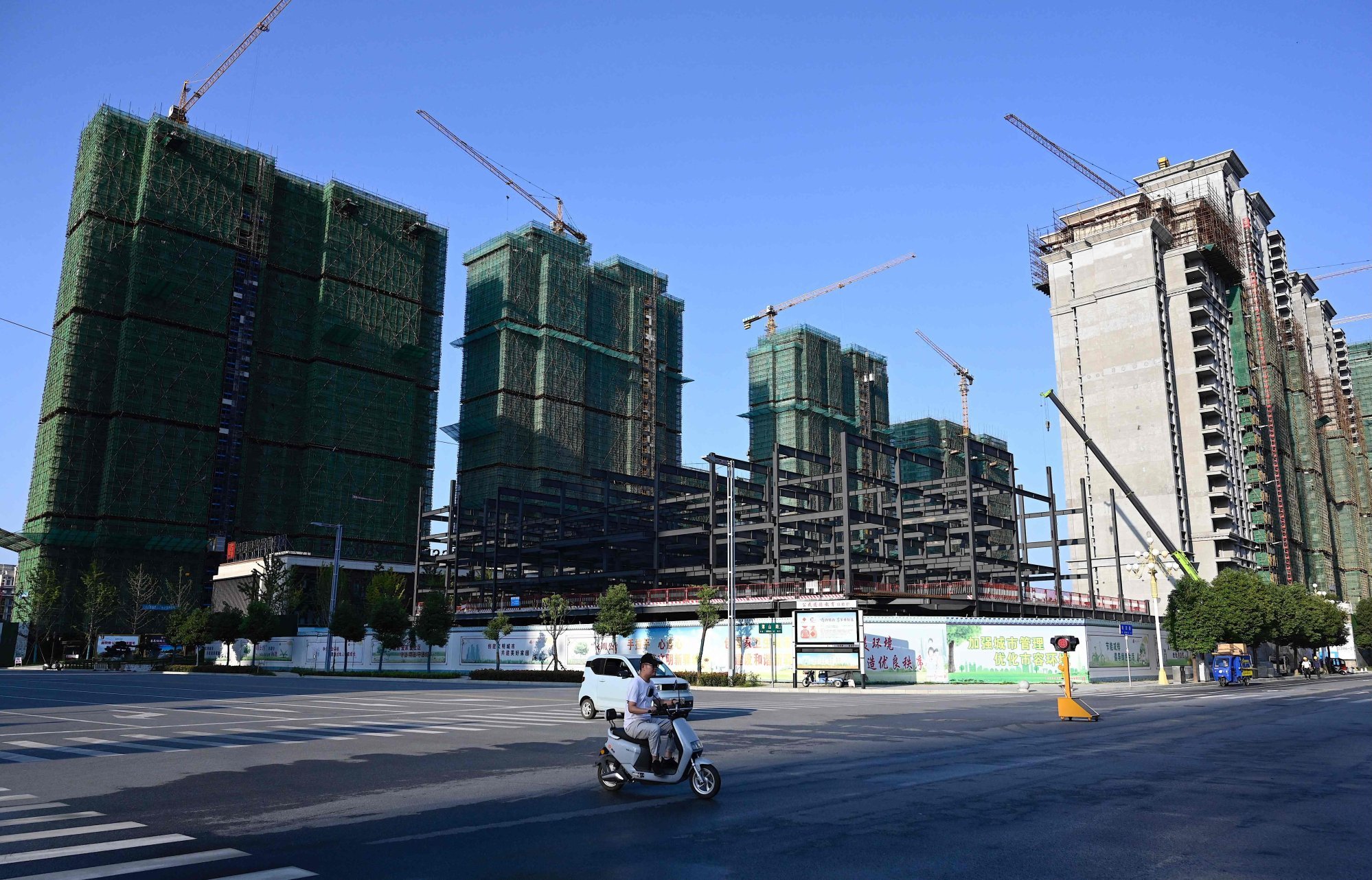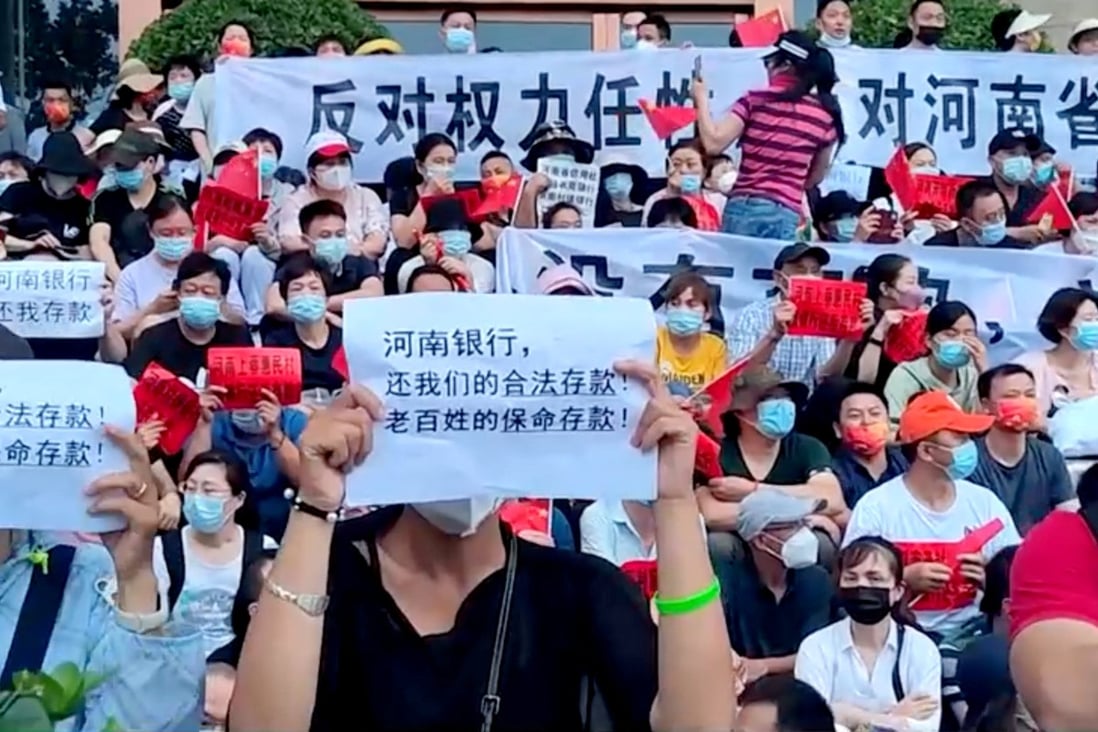
Ponzi dynamic with Chinese characteristics exposed by mortgage boycotts and Henan bank crisis
- Facing
angry homebuyers and bank depositors, local authorities in China are
looking to the central government to foot the bill, but Beijing wants
them to take on more debt
- The
crisis points to a major weakness in Chinese banking and credit markets
– the lack of real tests of the collateral used to extend credit
 When victims
of a financial Ponzi scheme travelled to Henan province in early July
to seek redress, police made a show of busting heads and making arrests.
Now, central authorities claim they will reimburse most of the victims – said to number over 300,000 in total. What changed?
When victims
of a financial Ponzi scheme travelled to Henan province in early July
to seek redress, police made a show of busting heads and making arrests.
Now, central authorities claim they will reimburse most of the victims – said to number over 300,000 in total. What changed?
The bag holder. Henan may have been trying to nudge the central government into action.
After all, Henan authorities could have stopped the protest before it broke out. Over 1,300 aggrieved bank customers tried to travel to Zhengzhou to plead for their money but were stopped when the “health codes” on their phones turned red.
The codes, which indicate Covid-19 status, are required for travel. The would-be protesters who received red codes were unable to use trains and city buses and, ultimately, participate in the demonstration. It turned out that Henan authorities had written into the health code regulations that they could be used for “crowd control”.
If Henan could have diverted all protesters but didn’t, why? Maybe because, with myriad unresolved debt issues, “who will pay?” has become the hottest potato being tossed around China, and there’s nothing to pressure central authorities like a public protest.
Nowhere is this game of hot potato between local and central authorities more evident than in the commercial property market. In July, homeowners in at least 80 cities in China refused to pay mortgages on uncompleted properties.
 About
90 per cent of Chinese flats are pre-sold months or even years before
construction is complete. Buyers have typically been happy to pay in
advance because home prices always went up, so by the time they took
possession, they expected to make a profit.
About
90 per cent of Chinese flats are pre-sold months or even years before
construction is complete. Buyers have typically been happy to pay in
advance because home prices always went up, so by the time they took
possession, they expected to make a profit.
Inevitably, the upwards spiral has ended. Many developers have disappeared along with the prepayments, leaving nothing but a construction site behind. Who gets stuck?
Buyers are disinclined to keep paying mortgages on properties they cannot occupy. The banks that issued the mortgages do not want to take a hit, when they did nothing wrong. The developers diverted the prepayments back in the go-go days just like everyone else was doing, and now they simply have no money to pay.
In August, central authorities announced guarantees for onshore bonds issued by some developers. They have raised the quota that allows local governments to issue more debt. They have repeatedly lowered interest rates and insisted that banks be more accommodating.
But why should a local government take on debt to build flats when the developer has absconded with the money? They cannot very well ask buyers to pay a second mortgage. Unfinished property is not only a potential cash black hole but a current liability as well.
This points to a major weakness in Chinese banking and credit markets – the lack of real tests of the collateral used to extend credit. In June, state-owned and private lenders lost more than US$1 billion to a scheme in which aluminium stocks used as collateral were faked. China is infamous for faked metals “held” as collateral, which, in the case of a default on a debt, are simply not there.
In the first half of 2022, corporate bond defaults in the offshore market reached US$20 billion. Self-styled financial moguls have fled collapsing Ponzis worth billions of dollars in China’s poorly regulated financial markets, robbing the savings of grandmothers and migrant workers.
Financial collapses have been common for decades in China, from the Gitic default of 1998 to the crumbling peer-to-peer schemes of 2016, or this year’s bond failures. Chinese cities are dotted with closed amusement parks, dried-up golf courses, dark shopping centres, and villa developments that house only packs of wild dogs.
But the growth of new financing that has characterised the economy since the mid-1990s washed away earlier sins, raising the book value, for example, of dead real estate on a bank’s balance sheet so that the fact that it was empty could be ignored. It is a Ponzi dynamic with Chinese characteristics.
China’s history of investment-driven growth has mostly been the story of letting local governments run wild. In the mid-1990s, Premier Li Peng decided to allow these governments to build anything they wanted, as long as they could raise the debt. In 1998, China Development Bank landed on the brilliant idea of letting them collateralise land – all government-owned – for debt, and the private housing market was born, along with the biggest debt bubble on the planet.
Perpetual motion machines do not exist, Ponzis run out of new money, and the Chinese economy simply cannot accelerate credit forever. That means someone has to take responsibility for the gaping lacunae of debt, whether to depositors in Henan, property owners boycotting their mortgages, or companies financing fake aluminium.
During past crises, this debt has been apportioned out among stakeholders or else dumped on the heads of individuals with no say. Those strategies work when the numbers are small enough. Arguably, though, the problem in China now is too big to contain, and the steps taken so far too small to stem the tide.
To address the problem, it is time, as Premier Li Keqiang once said, to “cut one’s own wrists”. Two steps are essential. All financial regulations related to hypothecating debt need reviewing to stop the unfettered expansion of insecure debt. And the government needs to sell real assets, primarily state-owned enterprises. If the current debt crisis forces a return to privatisation, that may in the end be a happy result for everyone.




No comments:
Post a Comment
Note: Only a member of this blog may post a comment.